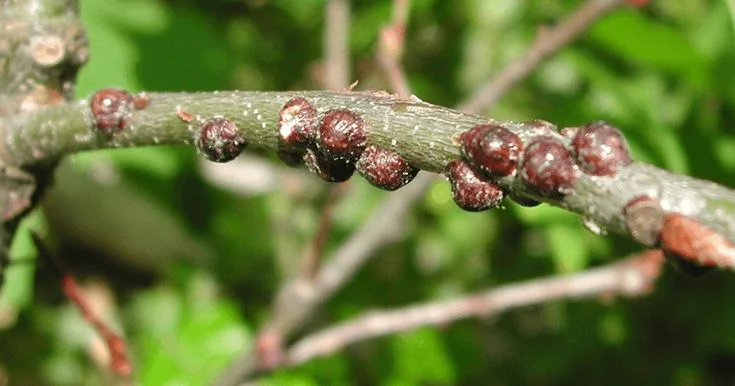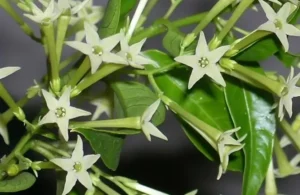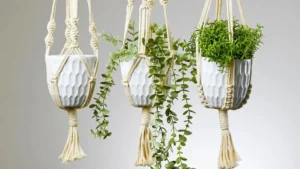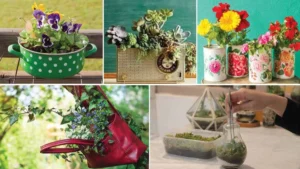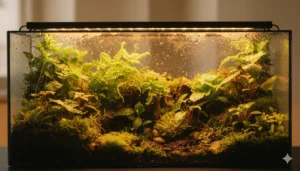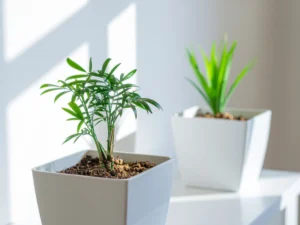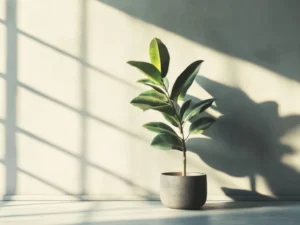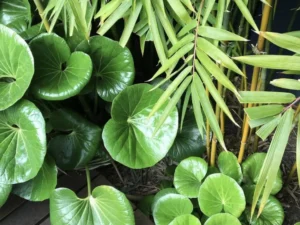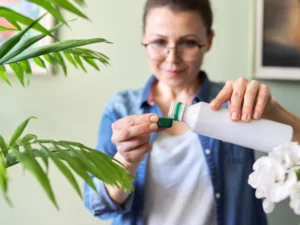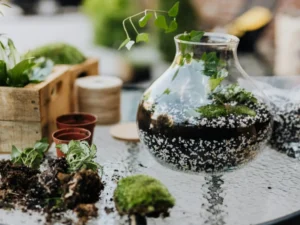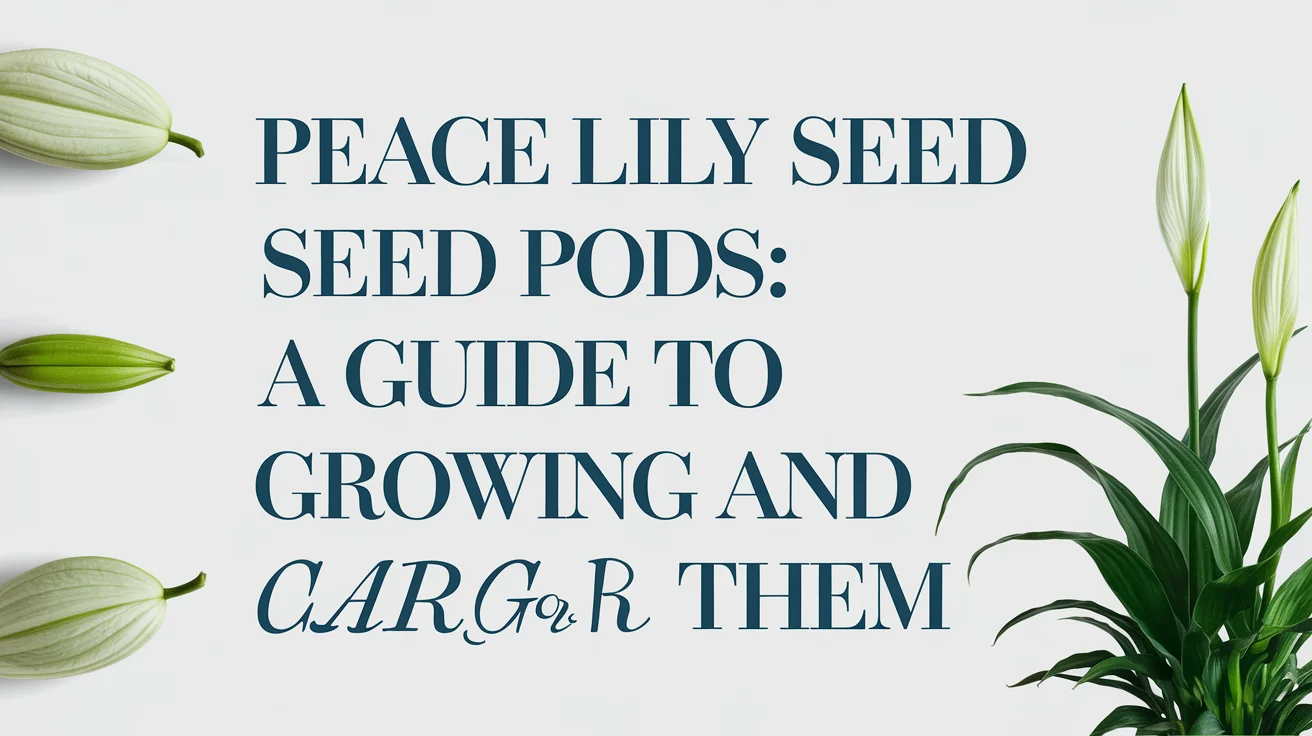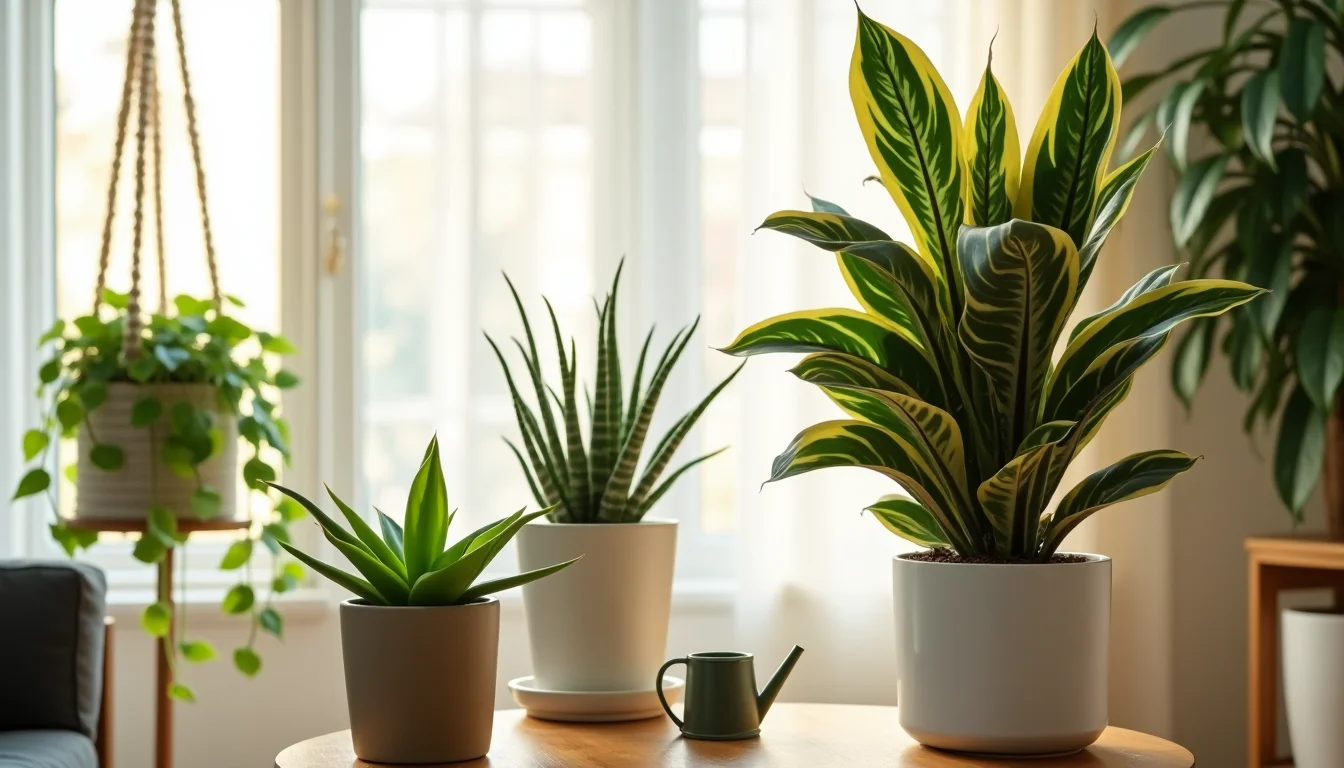When caring for houseplants or garden plants, one common question many plant owners ask is, “What does scale look like on plants?” Scale insects are sneaky pests that can weaken your plant’s health if left untreated.
These tiny pests may seem harmless at first, but they can quickly spread, sucking sap from leaves and stems. Understanding how scale looks, what symptoms it causes, and how to treat it will help you protect your plants from damage.
In this article, we’ll explore the appearance of scale insects on plants, common signs of infestation, and practical steps you can take to control and prevent them.
Understanding Scale Insects on Plants
Scale insects are sap-sucking pests that attach themselves to the leaves, stems, and branches of plants. Unlike other pests, scale does not move around much once it finds a feeding spot.
Instead, it forms a protective shell or coating, making it harder to detect and remove. This is why plant owners often confuse them with natural blemishes or growths on leaves.
What Does Scale Look Like on Plants?
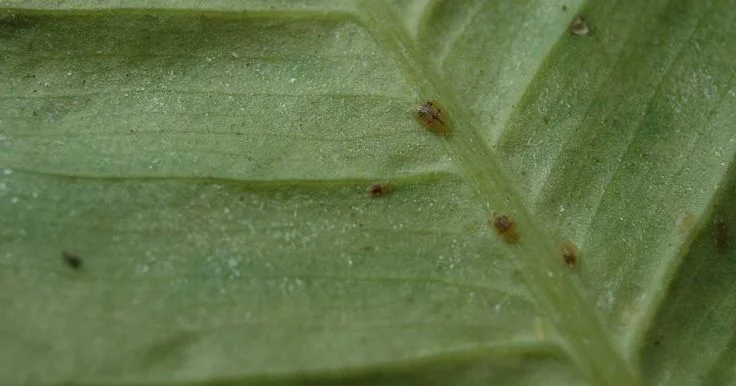
To answer this clearly, scale on plants can look like several distinct features. First, you may notice tiny bumps or domes on stems and leaves that seem unusual. Next, these pests often take oval, round, or shell-like shapes that may appear tan, brown, black, or even white, depending on the species.
Additionally, infestations usually form clusters of raised spots, often resembling the plant’s natural texture, which makes them harder to detect. Unlike other pests such as spider mites or aphids, scale does not crawl visibly. Instead, they remain still, blending seamlessly with the plant’s surface and disguising themselves as part of the plant.
Appearance of Scale Insects at Different Stages
The appearance of scale insects at different stages can vary greatly, which often makes them difficult to recognize. In their immature stage, also called crawlers, they are tiny, yellowish, and mobile, usually requiring a magnifying glass to spot.
As they mature into adults, scale insects become immobile and may appear as hard-bodied or soft-bodied pests, resembling small, wart-like bumps attached to leaves and stems. In severe infestations, they cluster together, forming patches that look like scabs or blisters on the plant surface.
By understanding how scale looks at each stage, gardeners and houseplant owners can detect problems early, apply the right treatments, and protect their plants from long-term damage.
Immature Scale (Crawlers)
In the crawler stage, scale insects are tiny, yellowish, or light-colored and remain mobile. At this point, they actively search for a feeding spot on leaves or stems. However, because of their size, they are very difficult to see without a magnifying glass. Early detection during this stage is crucial, as crawlers are easier to control before they develop protective coverings.
Adult Scale
Once matured, scale insects become immobile and may appear as either hard-bodied or soft-bodied pests, depending on the species. Typically, they resemble small, wart-like bumps that cling tightly to stems and leaves. Unlike in the crawler stage, adult scale is much harder to eliminate due to their protective shells.
Clusters of Scale
In cases of heavy infestation, scale insects often form large clusters on plant surfaces. Consequently, these clusters may look like raised scabs or blisters on stems and leaves. Over time, such buildup can cause significant plant stress, leading to yellowing, leaf drop, or stunted growth. Identifying these clusters early helps prevent further damage and spreading.
Symptoms of Scale Infestation on Plants
If you are wondering how to know your plant has scale, look for these common signs:
- Yellowing leaves due to loss of sap.
- Sticky residue (honeydew) left behind by scale insects.
- Sooty mold growing on honeydew, turning leaves black.
- Weak, stunted growth from nutrient depletion.
- Leaf drop and branch dieback in severe infestations.
Why Is Scale Harmful to Plants?
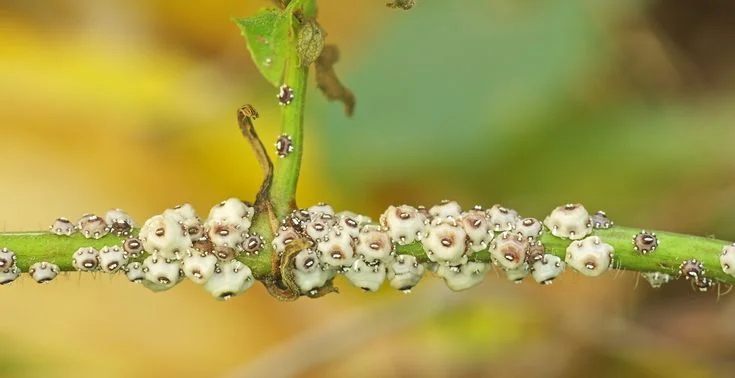
Scale insects drain vital nutrients, therefore leaving plants vulnerable to disease and gradual decline. Although a small infestation may not immediately kill a healthy plant, a severe and untreated outbreak can eventually cause serious damage.
For example, plants may suffer from permanent leaf loss, which weakens their ability to photosynthesize. In addition, scale infestations often lead to reduced flowering and fruiting, lowering both plant beauty and productivity.
In the worst cases, younger or weaker plants may even die as a result of the pest’s damage. Since scale disguises itself so effectively, many gardeners only notice the problem once their plants begin to show obvious and serious stress.
Types of Scale Found on Plants
When learning what scale looks like on plants, it’s important to understand the different types of scale insects that may attack your houseplants or garden plants. The two main categories are soft scale and armored scale.
Soft scale insects are usually round or oval with a waxy coating and produce sticky honeydew that often leads to sooty mold on leaves. On the other hand, armored scale insects have a hard shell that protects them, making them more difficult to control and they do not produce honeydew. Both types can appear as small bumps on leaves, stems, or branches, often mistaken for natural plant textures.
By recognizing the different types of scale on plants, you can choose the right treatment method and prevent further infestations.
1. Soft Scale
- Produces honeydew.
- Often round or oval with a waxy coating.
- Common on indoor plants and fruit trees.
2. Armored Scale
- Hard protective shell.
- Does not produce honeydew.
- More difficult to remove manually.
How to Identify Scale vs Other Plant Problems
Sometimes plant owners confuse scale with natural spots or fungal infections. To correctly identify scale:
- Touch the bumps: Scale feels hard or waxy, unlike fungal spots.
- Check for sticky leaves: Honeydew is a clear sign of scale.
- Use a magnifying glass: Crawlers may be visible moving early in life.
For comparison, you can also refer to trusted gardening resources like University of California Agriculture and Natural Resources which provides detailed pest identification guides.
How to Treat Scale on Plants
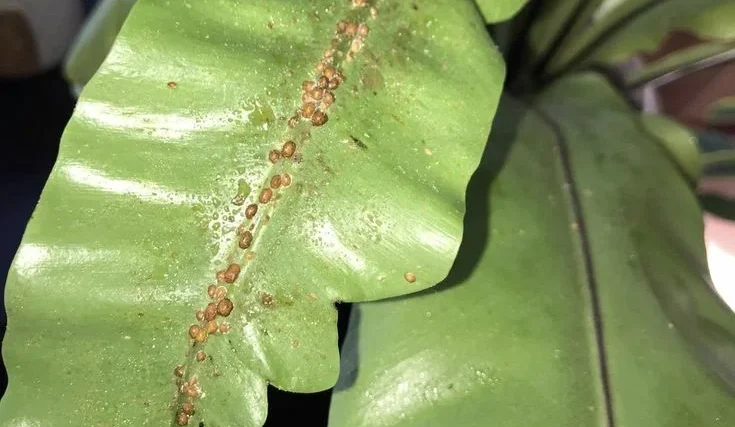
If you’ve identified scale insects, the next step is learning how to treat scale on plants effectively. Start by manually removing light infestations using a cotton swab dipped in rubbing alcohol or gently scraping the pests from leaves and stems. For heavier infestations, prune affected branches and apply horticultural oil or insecticidal soap to suffocate young crawlers before they mature.
If you’re dealing with similar issues on indoor plants, such as leaf drop on a Fiddle Leaf Fig, check out our detailed guide on Fiddle Leaf Fig leaves dropping for additional tips on plant care and recovery.
Indoor plant owners may also use neem oil sprays for a natural and eco-friendly solution.
In outdoor gardens, introducing beneficial insects like ladybugs or parasitic wasps can help control the population. For severe cases, systemic insecticides may be necessary, but they should always be a last resort. By combining these methods and monitoring your plants regularly, you can successfully manage scale insects and keep your plants healthy.
1. Manual Removal
- Use a soft brush or cotton swab dipped in rubbing alcohol.
- Gently rub affected areas to dislodge insects.
2. Pruning
- Trim heavily infested branches.
- Dispose of pruned material to prevent spread.
3. Insecticidal Soap or Horticultural Oil
- Spray affected leaves and stems thoroughly.
- Works best on young scale crawlers.
4. Natural Predators
- Ladybugs and parasitic wasps feed on scale.
- Encouraging beneficial insects helps long-term control.
5. Systemic Insecticides (For Severe Cases)
- Used as a last resort on outdoor plants.
- Absorbed by the plant to target feeding scale.
Preventing Scale Infestation
To avoid recurring problems, prevention is key. First of all, always inspect new plants carefully before bringing them indoors to ensure they are pest-free. In addition, make it a habit to wipe leaves regularly, as this helps remove early pests before they multiply.
For more detailed information on spotting early infestations, you can check out signs of spider mites, which can help you act before they damage your plants.
Moreover, avoid over-fertilizing, since excessive nutrients can attract scale insects and encourage rapid infestations. Finally, increasing humidity around your houseplants not only discourages scale but also supports overall plant health.
FAQs About Scale on Plants
Q1: What does scale damage look like on plants?
Scale damage shows up as yellow leaves, sticky residue, and weak growth. Severe infestations can lead to leaf drop and plant death.
Q2: Can scale spread to other plants?
Yes, especially during the crawler stage when young scale insects move to nearby plants.
Q3: Is scale the same as mealybugs?
No, although they are related. Mealybugs look fluffy and white, while scale looks like hard bumps.
Q4: Can I use neem oil for scale on plants?
Yes, neem oil is an effective natural treatment for soft-bodied scale and helps prevent new infestations.
Q5: How long does it take to get rid of scale?
Depending on severity, treatment may take several weeks with consistent care.
Conclusion: Protecting Plants from Scale
So, what does scale look like on plants? In short, scale appears as tiny shell-like bumps on leaves and stems, often mistaken for natural growths. As a result, these pests weaken plants by sucking out sap, which eventually leads to yellowing, stunted growth, and even plant death if left untreated.
Fortunately, by learning to identify the signs early, applying proper treatments, and practicing preventive care, you can keep both your houseplants and garden healthy and thriving.
Ultimately, with the right attention and consistent care, your plants can recover from scale damage and continue to grow beautifully for years to come.

